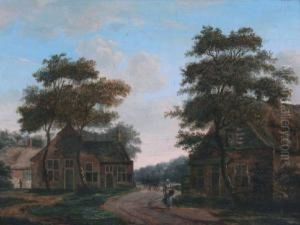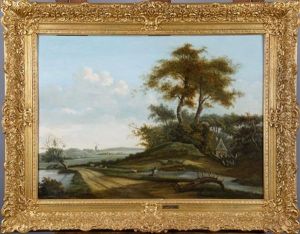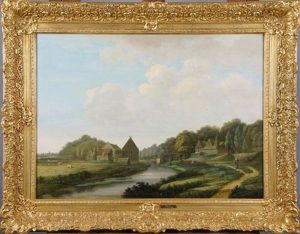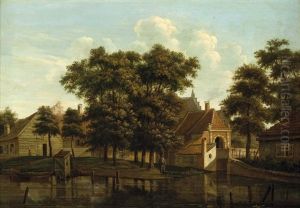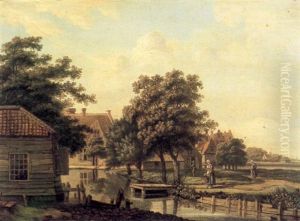Jan Jacob Teyler Van Hall Paintings
Jan Jacob Teyler van Hall, born in 1702, was not primarily known as an artist during his lifetime but rather as an important figure in the fields of science and art collecting, particularly in the Netherlands. His contributions to the art world are more closely associated with his role as a collector and patron than as an artist himself. Coming from a period that valued the enlightenment ideals of knowledge and discovery, Teyler van Hall's interests spanned across various disciplines, reflecting the era's intellectual curiosity.
Despite the lack of detailed records about his personal life or an extensive biography as an artist, Teyler van Hall's legacy is closely tied to the Teylers Museum in Haarlem, the Netherlands. This museum, which opened in 1784, was established based on the estate of Pieter Teyler van der Hulst, a wealthy Dutch cloth merchant and banker, who was a contemporary and likely an acquaintance or relative of Jan Jacob Teyler van Hall. The museum's founding collection included art, scientific instruments, and books, emphasizing the enlightenment era's interdisciplinary approach.
Teyler van Hall's contribution to the arts, therefore, is best viewed through his association with the Teyler's Museum and its mission to educate and enrich the public in the arts and sciences. His death in 1772 marked the end of an era for his immediate circle, but the institutions and collections he supported continued to influence Dutch art and culture. The museum remains a testament to the values he and his contemporaries held dear, preserving a legacy of curiosity, education, and appreciation for both art and science. His life reminds us of the importance of patronage and collecting in the history of art, demonstrating how individuals' passions and interests can shape cultural heritage for future generations.
